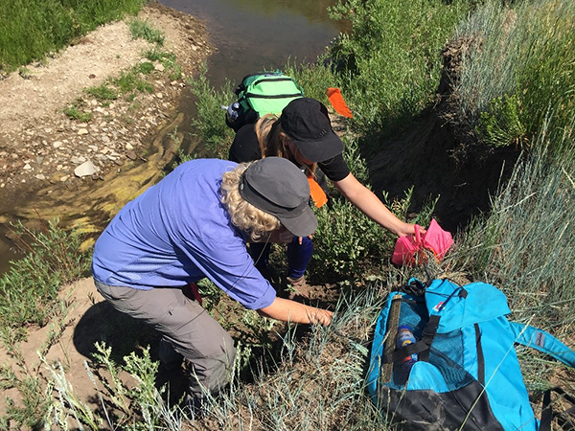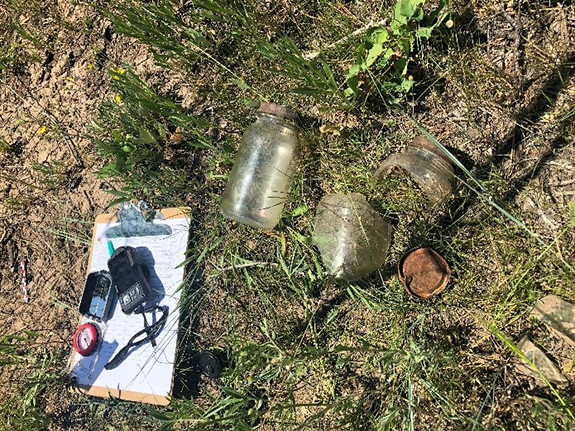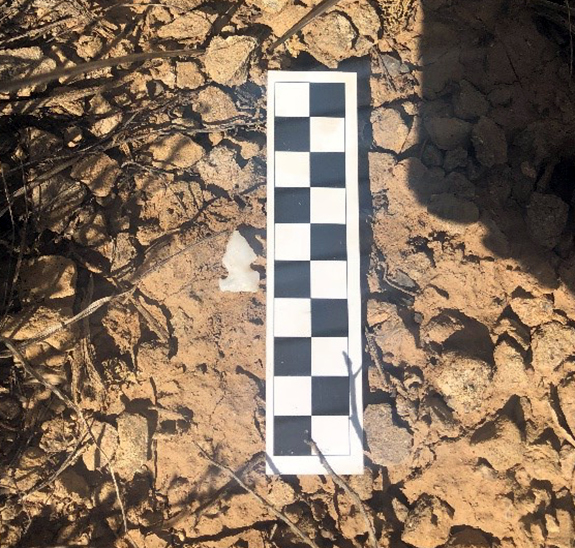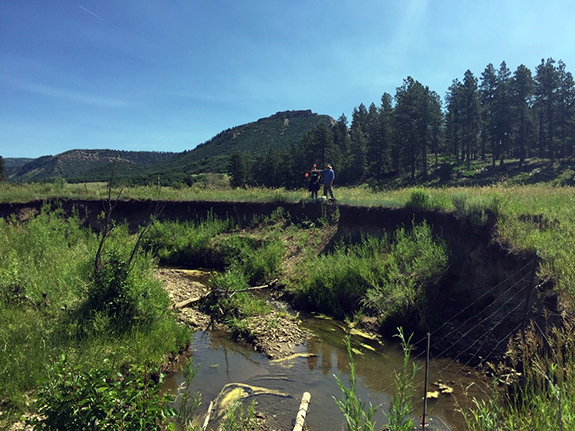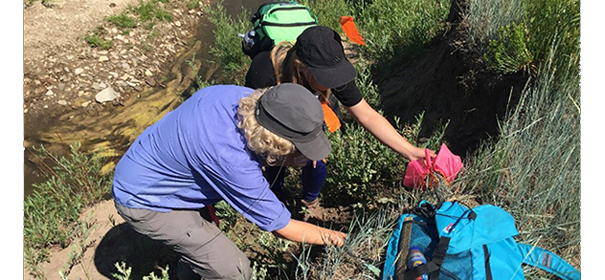
By Nichelle Taylor
In mid-July, I volunteered for History Colorado’s Lone Mesa State Park Program for Avocational Archaeological Certification (PAAC) Survey , an hour outside of Dolores, Colorado. This area has a rich history well known to residents, and one that is interwoven with my own family history as my mother’s parents continued a tradition of homesteading in the area. But behind the Ponderosa Pines and the small-town feel, there are remnants of important human prehistory and history in need of discovering and documenting.
Rebecca Simon, assistant state archaeologist for Colorado, led a group of volunteers for two weeks through 450 acres of the 11,760-acre park to survey the land for any significant finds. I spent a week with Rebecca, and the rest of the crew, in the hot sun and sage brush-filled hills. In our time together, we uncovered grinding tools, such as manos and metates; flakes, which are simple, small tools that were used by Native Americans for a short time and then discarded; arrowheads of various sizes; evidence of a wickiup and logging; and numerous pieces of glass — I was even nicknamed the ‘Goddess of Glass’ due to the amount I kept finding during our survey. I had never seen these prehistoric artifacts before, and it was amazing being able to see them in real life.
The survey’s purpose was to collect information about what needs to be protected on the land and whether it should be opened to the public, since it’s only been open for hunting since 2002. Because it’s essential to accurately tell the stories of the people who lived here and preserve artifacts for future generations to study and understand, protection of the area is critical.
After spending time in the field with professional archaeologists and other volunteers, I learned so much. From filling out forms, to identifying the material of arrowheads and flakes, to understanding the truth behind the saying, “It’s always the last hour of the last day that you find something.” And while I may not remember the difference between chert and obsidian in 50 years, I’ll always remember our last-minute find: A large site we ended up staying late to document. By the time we left, the site was decorated with several of our neon flags, marking each artifact. A rush of adrenaline and excitement ran through the air, and the bustling of each person was a perfect end to a wondrous adventure.
I am so thankful for the opportunity to explore the field of anthropology even further by discovering parts of Colorado’s past. While some may not choose to spend their summer learning, I would leap at a chance to do something like this again. The kind and generous people on the Lone Mesa State Park PAAC Survey made the experience even more special, and I am so glad to have been part of it.

